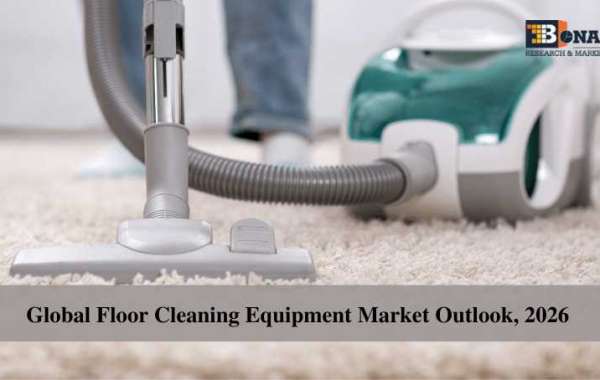
Global Floor Cleaning Equipment Market | Industry Analysis & forecast: Bonafide Research
Floor cleaning technology has seen some important advancement in the last few years, adding fun to the 10-minute parade around the living room. Eruptions of technological innovations have turned the floor cleaning equipment industry on its head, but the battle to dominate dust and debris continues. The research report titled Global Floor Cleaning Equipment Market Outlook, 2026 by Bonafide Research categorizes the market to forecast the revenues and analyze the trends in each of the following segments: based on product type, based on application, based on region, countries major companies.
Started as an invention to ease the manual labor incurred in the cleaning process, the mass production and plastics turned this once-luxury item into a household necessity. This uncommon western country household belonging accounted for a value of USD 7.36 Billion in 2015, globally. It took some time for floor cleaning machines to evolve from simple to sophisticated. In recent years, technology and innovation have advanced and significantly improved these devices. New machines increase productivity and efficiency by combining several floor cleaning functions into one machine. Even though such machines cost a fortune, they reduce the overall time and energy, allowing the user to make the best of their investment. With the introduction of self-cleaning features, the global market is expected to grow over a CAGR of 8%.
From being a noisy alarm to a bag-less sleek compact handy support, the vacuum cleaner segment has come a long way, leading the floor cleaning equipment market with a share of 46.24% in 2020. The bag-less technology has been around a while in light-duty stick vacuums, but newer style bag-less models have amped up the power with high suction for big jobs. There has been a growing fuss about the riding equipment, which is proven to be at least 40% more productive. With innovations pouring in, the demand is to be majorly in line with the usage and application, the floor sweeper segment is expected to grow CAGR of over 10% through the forecasted period. As the ride-on machines do amazing for huge spaces, the demand for small lightweight inexpensive push auto-scrubbers is also to increase. Such machines prove best for limited spaces. Not only are these machines more productive, but they also remove soil with clean water, something that a mop and pail can’t do after cleaning the first room.
Alternative power sources are also increasing floor cleaning machine productivity, and especially prove beneficial in the commercial segment which has a frequent cleaning requirement. The commercial end-user segment dominates the market, with a market share of over 80%. Propane-powered burnishers provide a high-gloss shine as fast as the machine is navigated. With this increased productivity, there is no reason to let the condition of commercial spaces floors deteriorate especially in the hospitality sector. The residential end-users are typically more expressive with environmental concerns and insist on better micro filters to capture air-borne microorganisms. Manufacturers are working towards making a considerable progression, as the residential segment is expected to grow over an anticipated CAGR of 11%. Manufacturers also believe that almost all vacuum cleaners will soon be available with hospital-grade filters.
While it has been proved beyond doubt that the traditional modes of sweeping swabbing cannot yield effective cleaning results, many rural regions in developing counties like India, Brazil, and Argentina, etc. still are unaware of the cleaning machinery or rather can’t afford them. While North America Europe is expected to show a decline in the market share, Latin America and Middle East Africa together could hardly cover 15% of the global market by 2026
Even though the involvement of autonomous cleaning and robotics was seen as the most logical one, the high cost restricted the growth only within the top commercial spaces. However, the cost of these technologies is quickly reaching the point at which they are effective, safe, and affordable. This highly competitive market is dominated by Nilfisk Group, Alfred K?rcher GmbH Co. KG, Amano Co., Diversy, Dyson, EUREKA, iRobot, Miele, Electrolux, and few other regional companies. In the area of the internet of things, NSS’s Sentry wireless-equipment monitoring system uses cellphone networks to track machine use, charging cycles, battery maintenance, and sudden impacts. It also allows the operator to call for service directly from the machine.